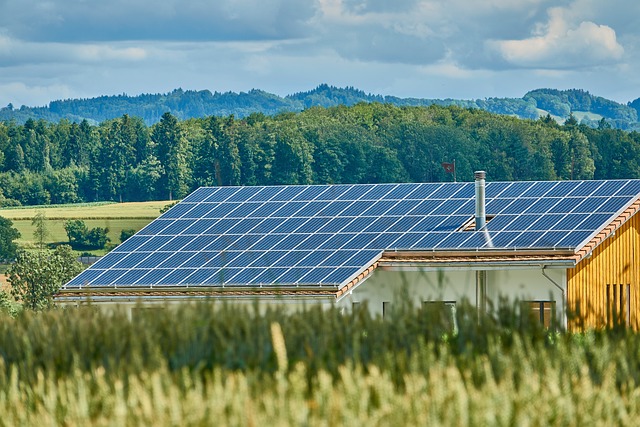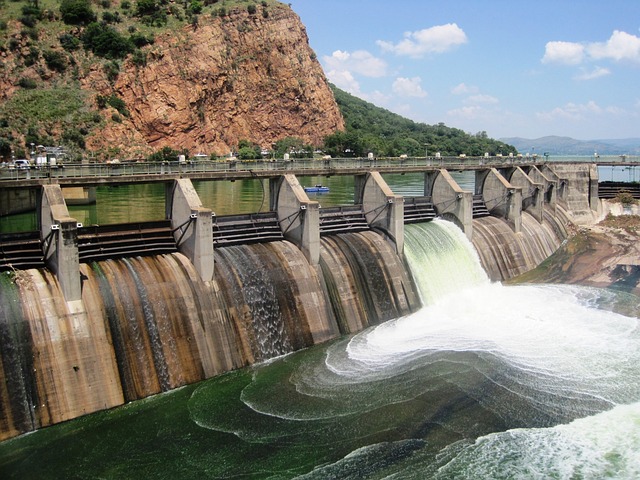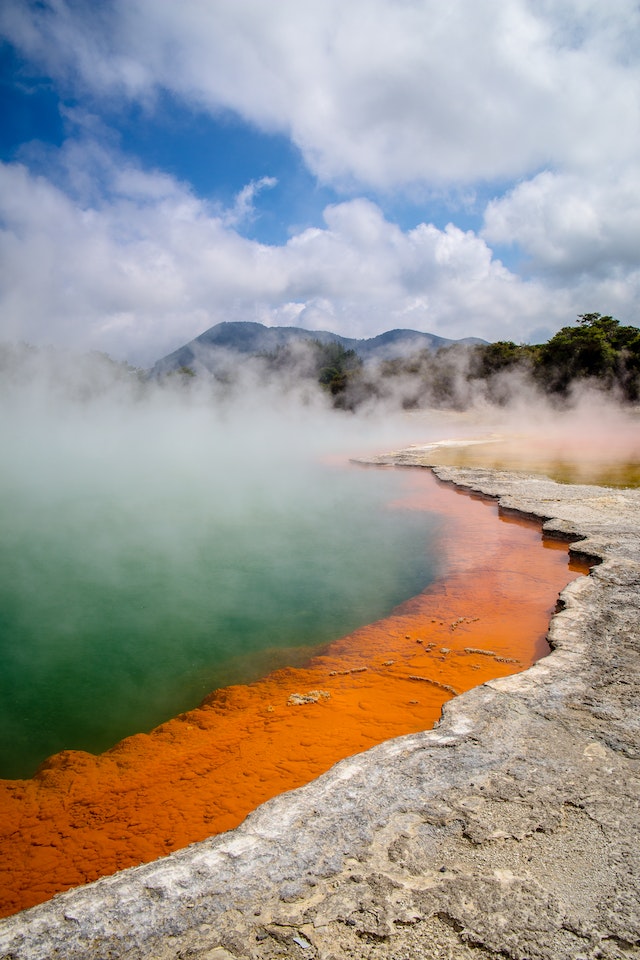
As the world’s population continues to grow, so does our reliance on energy. But with the adverse effects of climate change becoming more evident every day, the need for clean and sustainable sources of power has become a pressing matter. Thankfully, recent renewable energy advancements such as solar, wind, and hydro have made it possible for us to shift towards a more sustainable and eco-friendly future.
Solar Energy
Solar energy is one of the most promising sources of renewable energy. With the cost of solar panels falling and the efficiency of the technology increasing, solar power is now a viable option for both commercial and residential use.
The Rise of Photovoltaics:
Photovoltaic (PV) technology lies at the heart of solar energy. These innovative devices convert sunlight directly into electricity using semiconducting materials. Over the years, advancements in PV cells have significantly improved their efficiency and reduced production costs, making solar power more economically viable.
Enhanced Efficiency: Through the use of newer materials like perovskite, PV cells have achieved record-breaking efficiencies, maximizing the conversion of sunlight into usable electricity. By continuously pushing the boundaries of solar cell efficiency, scientists strive to unlock even greater potential for solar energy.
Thin-Film Solar Cells: Thin-film solar cells have revolutionized the way we integrate solar panels into various applications. These lightweight and flexible solar panels can be seamlessly incorporated into building materials, providing opportunities for solar power integration in urban landscapes and consumer products.
Capturing Sunlight
While PV technology is the most common approach for solar power generation, concentrated solar power (CSP) utilizes mirrors or lenses to focus sunlight onto a specific point. This concentrated heat is then used to generate electricity through various methods.
Tower Systems: Tower-based CSP systems employ an array of mirrors or heliostats to reflect sunlight towards a central tower, where it heats a working fluid contained within. The heated fluid is then used to generate steam, propelling a turbine to produce electricity.
Parabolic Troughs: Parabolic trough systems use long, curved mirrors arranged in a parabolic shape. These mirrors focus sunlight onto a receiver pipe running along their focal line. The intense heat from the concentrated sunlight is used to create steam and drive turbines.
Solar Energy Storage
One challenge of solar power is its intermittent nature, as the sun does not shine 24/7. However, advancements in energy storage technologies are addressing this issue, enabling solar energy to be more consistently available.

Battery Technologies: The development of efficient and cost-effective energy storage batteries, such as lithium-ion batteries, has made it possible to store excess solar energy generated during the day for later use during periods of low sunlight or high demand.
Molten Salt Storage: Concentrated solar power plants often employ molten salt storage systems. Excess solar energy is used to heat a molten salt mixture, which can be stored and used to generate electricity when needed, even after the sun has set.
Wind Energy
Wind energy is another promising source of renewable energy, with turbines generating more and more electricity every year. Advancements in wind energy technology have made it possible to construct larger and more efficient turbines leading to an increase in energy output.
The Evolution of Wind Turbines:
Wind turbines are the primary means of converting wind energy into electricity. Over the years, these towering structures have undergone significant advancements, resulting in more efficient and powerful energy generation.
Giant Rotors: One key development involves the enlargement of wind turbine rotors. The larger the surface area, the more wind is captured, leading to increased energy production. Modern wind turbines boast enormous rotors, some spanning over 300 feet in diameter, allowing for maximum power generation.
Offshore Wind Farms: Taking wind power to new heights, offshore wind farms capitalize on strong coastal breezes. Placing wind turbines in bodies of water allows for unhindered airflow and reduces visual impact on land. Offshore wind farms have the potential to generate vast amounts of clean energy and open up new avenues for renewable power.
Overcoming Turbulence and Limitations:
Though wind energy holds immense potential, it faces challenges such as turbulence and variability. Researchers and engineers are diligently working to address these limitations, paving the way for a more reliable and consistent energy source.
Aerodynamic Tweaks: By analyzing the complex aerodynamics of wind turbine blades, engineers strive to optimize their design. Refined blade profiles and innovative shaping techniques reduce turbulence, ensuring smoother airflow and improved energy conversion.
Grid Integration: To counter the intermittent nature of wind power, renewable energy advancements in grid integration techniques enable seamless integration with existing power systems. Intelligent management systems balance the fluctuating supply and demand, incorporating wind energy into the larger electricity grid while maintaining stability and reliability.
Tapping into Wind’s Potential:
Beyond traditional wind turbines, scientists are exploring creative ways to capture the wind’s power on a smaller scale, making renewable energy accessible even in urban environments.

Vertical Axis Wind Turbines: Unlike their horizontal counterparts, vertical axis wind turbines (VAWTs) operate regardless of wind direction. These compact and visually striking turbines can be installed in urban settings, harnessing the power of the wind amidst tall buildings and structures.
Wind-Integrated Architecture: Blurring the line between infrastructure and energy generation, wind-integrated architecture incorporates wind turbines seamlessly into the design of buildings.
Rooftop microturbines and integrated wind-capturing structures provide on-site energy generation, reducing reliance on the traditional power grid.
Hydro Energy
Hydro energy is one of the oldest forms of renewable energy, although it has had a few challenges in the past. With recent renewable energy advancements, however, it has become easier to generate electricity from hydro energy, particularly from smaller water sources.
The Power of Moving Water:
Water has fascinated mankind since time immemorial, and its energy potential continues to captivate scientists and engineers. By harnessing the kinetic energy of flowing water, hydroelectric power plants generate clean and renewable electricity.
The Genius of Dams: Dams have played a critical role in capturing the energy of water for centuries. By creating a controlled flow, dams drive turbines, which convert the force of falling water into electrical energy. The construction of larger and more efficient dams ensures a higher output of hydroelectric power.
Microhydro Innovations: Renewable energy advancements have paved the way for microhydro turbines, enabling the generation of power from smaller water sources. These compact turbines, often small enough to fit in a backpack, provide a promising solution for remote areas with access to streams and rivers.
Tidal and Wave Power
The ebb and flow of the tides and the ceaseless motion of ocean waves hold immense potential for energy production. Renewable energy advancements in tidal and wave power technologies are revolutionizing our ability to harness these forces of nature.
Tidal Energy: Tide turbines placed beneath the water’s surface capture the energy of tidal currents. As the tides rise and fall, these submerged turbines spin, generating electricity. Tidal barrages, which use a series of built structures to capture the energy of the rising and falling tides, are also being explored as a means of tidal energy production.
Wave Energy: Waves, driven by the gravitational pull of the moon and the sun, possess incredible power. Wave energy converters capture the energy from the vertical movement of waves and convert it into usable electricity, offering a promising avenue for sustainable power generation.
Hydropower and the Environment:
Despite its many advantages, hydro energy has encountered challenges related to its environmental impact. However, ingenious renewable energy advancements are emerging to mitigate these concerns and make hydroelectric power even more environmentally friendly.
Fish-Friendly Designs: Traditional hydropower dams often posed obstacles for fish migration, impacting aquatic ecosystems. To address this, fish-friendly designs, such as fish ladders and fish bypass systems, now allow fish to safely navigate around dams, maintaining harmony between hydropower generation and aquatic life.

Low-Impact Run-of-River Systems: Run-of-river hydroelectric systems operate by diverting a portion of river flow through turbines, while maintaining the natural flow of the river. This approach minimizes the environmental disruption caused by traditional dam construction, striking a balance between energy generation and ecological preservation.
Geothermal Power
Geothermal is another great renewable source of energy. Derived from the heat within the Earth, geothermal energy holds tremendous potential as a clean and renewable energy source. Let’s delve into the depths of geothermal energy and discover how it can revolutionize our energy landscape.
Harnessing Earth’s Heat:
The Earth’s core, a scorching inferno of molten rock and metal, radiates an immense amount of heat. Geothermal power plants tap into this natural heat by drilling deep into the Earth’s crust to access geothermal reservoirs. These reservoirs contain hot water and steam that can be used to generate electricity.
Geothermal Wells: Geothermal power plants utilize wells drilled several thousand feet into the ground to reach the hot water and steam reservoirs. The heat is then harnessed through various methods for energy generation.
Binary Cycle Power Plants: In areas where the water temperature is not high enough to directly produce steam for Electricity production, binary cycle power plants are employed. Heat from the geothermal fluid is used to vaporize a second working fluid, which in turn powers a turbine to produce electricity.
Geothermal Heating and Cooling:
Beyond electricity generation, geothermal energy has remarkable potential for heating and cooling applications, making it a versatile and sustainable solution for buildings and communities.
Geothermal Heat Pumps: Geothermal heat pumps harness the constant temperature below the Earth’s surface to heat or cool buildings. This technology utilizes the stability of the geothermal reservoirs, providing efficient and cost-effective heating and cooling solutions.
District Heating Systems: In some geothermal-rich regions, district heating systems use geothermal energy to heat entire communities. Hot water from geothermal reservoirs is distributed through a network of insulated pipes, delivering reliable and renewable heat to homes, businesses, and institutions.
ENHANCED GEOTHERMAL SYSTEMS (EGS):
While traditional geothermal resources are limited to specific geological regions, EGS technology aims to expand access to geothermal energy by creating reservoirs where they don’t naturally exist. This cutting-edge approach involves injecting water into hot rock formations to create fractures, allowing for the extraction of heat.

Geothermal Reservoir Engineering: EGS technology utilizes advanced reservoir engineering techniques to increase permeability and heat transfer within the rock formations. This innovative method unlocks geothermal potential in regions previously deemed unfit for traditional geothermal power generation.
Geothermal Power Enhancement: EGS technology has the potential to significantly enhance geothermal power production, opening up a vast array of untapped resources. With further research and development, EGS holds promise for a more extensive and sustainable utilization of geothermal energy.
As we strive to reduce our carbon footprint and transition to a more sustainable energy landscape, exploring these alternative renewable energy advancements becomes imperative. Biomass, ocean energy, biofuels, hydrogen power, and waste-to-energy are just a few examples of innovative and promising solutions that can shape a cleaner and greener future. By investing in research, development, and widespread adoption of these technologies, we open ourselves up to a world where renewable energy becomes the norm, mitigating climate change and preserving our planet for generations to come.


